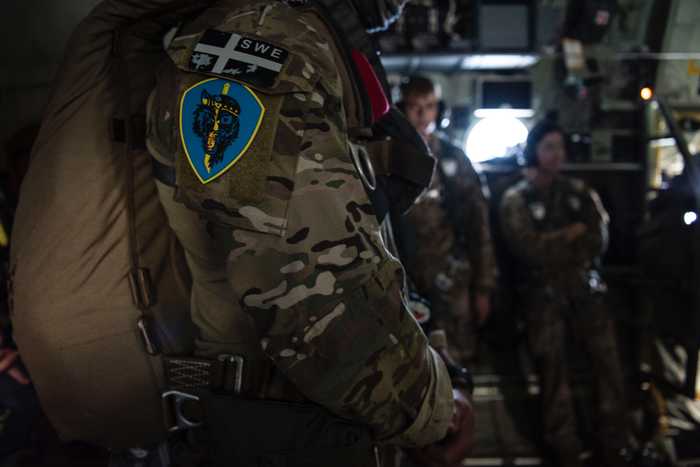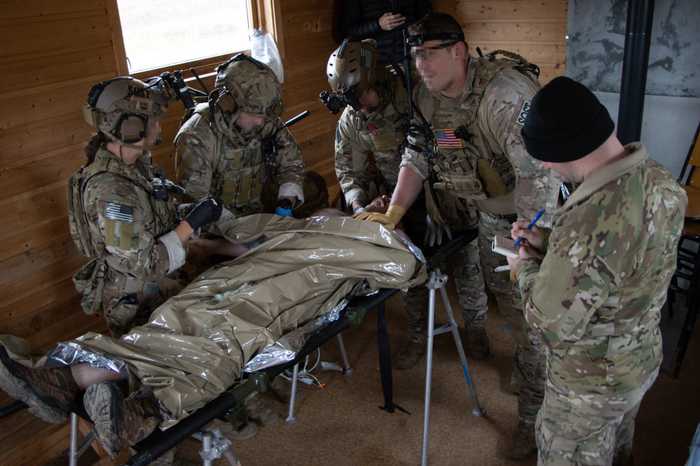Published 20:37 IST, May 20th 2024
SOCOM’s budget request for Fiscal Year 2025 is nearly flat, indicating a shift in focus towards high-stakes conflicts with nations like China, Russia, and Iran.
Advertisement
Florida: The American special operations forces (SOF) community finds itself at a pivotal juncture. After decades focused on low-intensity conflict, counter-insurgency, and counter-terrorism operations, they now face the primary threat of state adversaries, some of which are near-peer competitors. The transition towards a high-end fight, potentially spanning vast geographical areas, is a formidable challenge, but one that the SOF community is actively engaging with. This strategic metamorphosis was prominently showcased at the SOF Week convention in Tampa, Florida.
The biennial mock battle held outside the convention on Wednesday underscored the changing future of American special operations. Abandoning the previous scenario where Tampa's mayor was "kidnapped" by jihadists and subsequently rescued amidst a flurry of machine gun fire, this year's demonstration featured "adversary" drones and Marine special operations paragliders.
Advertisement
"We're just demonstrating some of what could be possible," stated Army Sgt. Maj. Jason Baker, a U.S. Special Operations Command (SOCOM) spokesperson. "Out there, the notional adversary has an electronic warfare capability, shutting down our communications. And so the MARSOC operators are coming down and shutting that down."
Enhanced Tactical Demonstrations
The new scenario highlighted MARSOC's use of counter-drone electronic warfare measures and other non-kinetic effects against drones from the fictional adversary nation, St. Petersburg. Despite the changes, traditional elements like explosions, helicopters, and gunfire remained part of the demonstration. New facets included a pair of U.S. Air Force F-35s providing close air support, reflecting the updated focus on high-end battlespaces. This updated scenario was designed to highlight the challenges SOCOM is preparing to face in a new era of state-level threats.
Advertisement

After years of budgetary and personnel growth to combat groups like the Taliban and al-Qaeda, SOCOM’s Fiscal Year 2025 presidential budget request is relatively flat, totaling $9.687 billion. This represents a modest increase of about $11 million over the previous year but a drop of $240 million from Fiscal Year 2023. The current emphasis is on planning for potential conflicts with state adversaries such as China, Russia, Iran, and North Korea, while maintaining the capacity to combat violent extremists.
The Evolving Nature of Warfare
The nature of warfare has significantly evolved since the last international SOF capabilities demonstration in May 2020. The onset of the Ukraine conflict has seen the widespread use of aerial and sea drones, which have been critical in blasting civilian infrastructure, sinking ships, and destroying armor and troops. Both sides engage in electronic warfare, complicating stealthy maneuvers.
Advertisement
In the Middle East, Red Sea shipping and Israel have faced Houthi missile and drone attacks, with Iran directly targeting Israel amidst the ongoing Gaza conflict. These developments underscore the need for SOF to adapt to a rapidly changing threat landscape.
Even as U.S. SOF troops have withdrawn from Afghanistan, around 6,000 remain deployed in 80 countries, according to Army Gen. Bryan Fenton, SOCOM’s commander. They continue to carry out traditional SOF missions such as foreign internal defense and civil affairs, helping partner nations bolster their own security.
Advertisement

However, the future role of U.S. SOF is evolving. After two decades of fighting insurgents with limited armament and enjoying permissive airspace, they now face adversaries like China. The Pacific region poses a significant challenge, with the vast distances and Beijing’s growing military capabilities making operations more complex. SOF will need to operate in smaller, distributed formations while maintaining the ability to communicate, direct fires, and achieve command and control.
A potential conflict in the Pacific would magnify the challenges faced in other regions. Forces will need to collaborate across distributed formations and share information seamlessly. According to Brose, "We cannot continue to field small numbers of very expensive, very exquisite things that are built by a handful of vendors in very artisanal ways that are very difficult to replace when you lose them. We have to do the opposite of that. We have to build far larger quantities of systems that are mass-producible, where you drive complexity out of those systems, you can replace them when you lose them."
Advertisement
The shift in focus and preparation exhibited at SOF Week reflects the broader strategic realignment of U.S. special operations forces as they gear up for the complexities of modern, high-end warfare.
20:37 IST, May 20th 2024